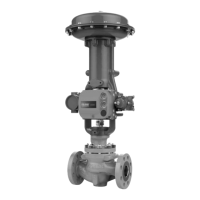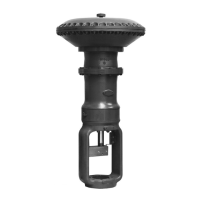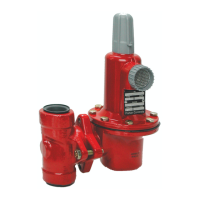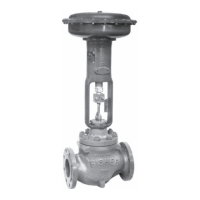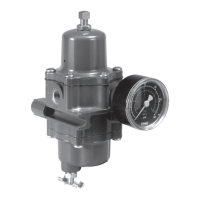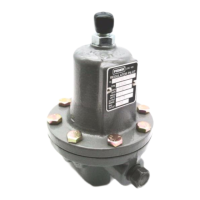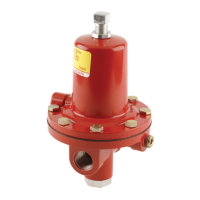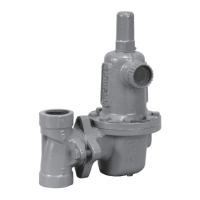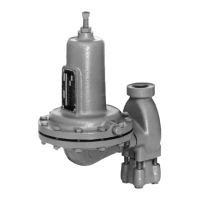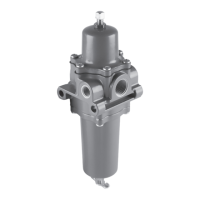Instruction Manual
D100310X012
667 Actuator (Size 30/30i - 76/76i and 87)
June 2017
12
deadband being too wide are no movement, a “jump” movement, or oscillating movements of the actuator during
automatic loop control. The following steps are provided to determine the span of deadband. The percent of
deadband is helpful in troubleshooting problems with the process control loop.
1. Start at a pressure near the lower bench set pressure, slowly increase pressure until the valve is approximately at
mid‐travel. Note this pressure reading.
2. Slowly decrease pressure until movement of the valve stem is detected, and note this pressure.
3. The difference between these two pressures is deadband, in psi.
4. Calculate the percent of deadband by:
Deadband, psi
Deadband = Deadband, psi
= nn %
Bench Set Span, psi
Loading Connection
Key number locations are shown in figures 6, 7, 8, 9, and 10, unless otherwise noted.
The loading pressure connections are made at the factory if the valve, actuator, and positioner come as a unit. Keep
the length of tubing or piping as short as possible to avoid transmission lag in the control signal. If a volume booster,
valve positioner, or other accessory is used, be sure that it is properly connected to the actuator. Refer to the
positioner instruction manual or other manuals as necessary. For actuators shipped separately or whenever the
actuator pressure connections are installed, use the following steps:
1. Connect the loading pressure piping to the NPT internal connection in the side of the yoke (key 73).
2. For size 70/70i and 87 actuators, if necessary, remove the 1/4 NPT bushing if a 1/2 NPT internal connection is
needed to increase connection size. The connection can be made with either piping or tubing.
3. Cycle the actuator several times to be sure that the valve stem travel is correct when the correct pressure ranges are
applied to the diaphragm.
4. If valve stem travel appears to be incorrect, refer to the Bench Set Spring Adjustment procedures at the beginning
of this section. Do not place the valve in service if it is not reacting correctly to diaphragm loading pressure changes.
Maintenance
Actuator parts are subject to normal wear and must be inspected regularly and replaced when necessary. The
frequency of inspection and replacement depends on the severity of service conditions.
WARNING
Avoid personal injury or property damage from sudden release of process pressure or uncontrolled movement of parts.
Before performing any maintenance operations:
D Do not remove the actuator from the valve while the valve is still pressurized.
D Always wear protective gloves, clothing, and eyewear when performing any maintenance operations to avoid personal
injury.
D Disconnect any operating lines providing air pressure, electric power, or a control signal to the actuator. Be sure the
actuator cannot suddenly open or close the valve.
D Use bypass valves or completely shut off the process to isolate the valve from process pressure. Relieve process pressure
from both sides of the valve. Drain the process media from both sides of the valve.
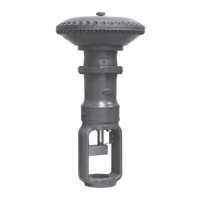
